|
|
Grand India Tour (from Mumbai
to Kochin)
(28 Days /
27 Nights)
(Mumbai
Udaipur Deogarh Jaipur Fatehpur Sikri Agra Sikandra Delhi
Varanasi Kolkata Hyderabad Chennai - Mahabalipuram
Pondicherry Chidambaram Kumbakonam Tanjore Trichy Madurai
Thekkady Alleppey Kochi)
(to view the route of this tour on a Map please click
here)
|
The
highlights of North and South India together with many UNESCO
monuments and UNESCO heritage sites are covered on great trip to India
Tour.
|
|
|
|
Day
01. Flight to India (Mumbai)
Around Midnight arrive in Mumbai
(formerly known as Bombay). The cosmopolitan City and capital of
Maharashtra is the main gateway for the travelers to
India. Upon
arrival, you will be met by an Indo Vacations representative and
transferred to the hotel.
Day 02.
Mumbai: Excursion
After having our breakfast we have sightseeing in Mumbai. Today in our
sightseeing we visit the Gandhi Museum, Hanging Garden, City Museum,
Marine Drive Flyover, St. Thomas Cathedral, Chhatrapati Shivaji
terminus, Rajabai Tower, Kamala Nehru Park, Hanging Gardens, Mumbai
University, High Court, Oval Maidan and Gateway of India. We have a
walk through the harbor area and visit the Gateway of India built in
1927 to commemorate the visit of George 5th from England. We have a
Boat Ride at Gateway of India. In the afternoon we visit the laundry
people on the shore (Dhobi Ghat) and later we will also learn about
the art of Dabbawalas. A dabbawala is a person who is part of a
delivery system that collects hot food in lunch boxes from the
residences of workers in the late morning, delivers the lunches to the
workplace by various modes of transport, mostly bicycles and the
railway trains, and returns the empty boxes back to the customer's
residence that afternoon. They are also made use of by prominent meal
suppliers in Mumbai where they ferry ready, cooked meals from central
kitchens to the customers and back.
Day 03. Mumbai - Elephanta - Mumbai (excursion)
Today we have an excursion to the Elephanta Island which is in Mumbai
Harbour, east of Mumbai. Elephanta island is located about 10 km from
the south east coast of Island city. Elephanta Island is a very famous
tourist destination due to the island's cave temples, the Elephanta
Caves, that have been carved out of rock. The Elephanta Caves are a
network of sculpted caves which are siotuated on Elephanta Island.
Rock cut architecture of the caves dates back between the 5th and 8th
centuries. The island was called Gharapuri and was a Hindu place of
worship until Portuguese rule began in 1534. This cave was restored
and renovated in the 1970s after years of neglect, and was included in
UNESCO World Heritage Site in 1987 to preserve the artwork. Presently
it is maintained by the Archaeological Survey of India. |
|
|
|
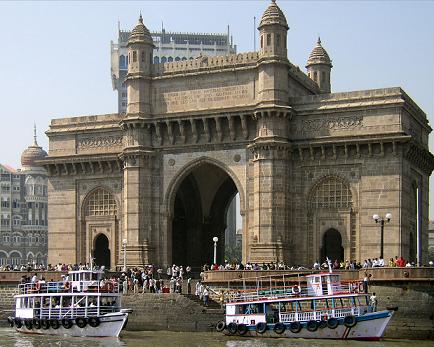 |
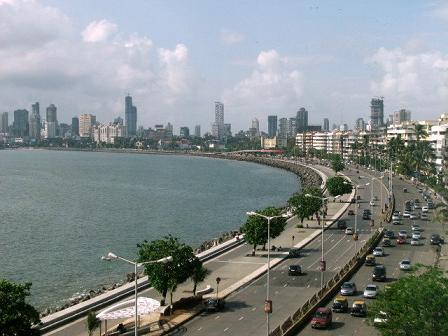 |
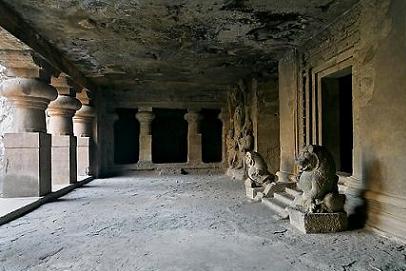 |
|
Gateway of
India |
Marine Drive |
Elephanta Cave |
|
|
Day
04. Mumbai - Udaipur (by air)
Today we have flight from Mumbai to Udaipur. Arrival in
Udaipur and transfer
to the hotel.
Udaipur is called the romantic city of
Rajasthan. A
city built around shimmering, clear, blue water lakes which reflect
the green hills of the Aravali ranges.
Day 05. Udaipur
Today we visit Udaipur, also known as the city of sunrise. We start
our sightseeing with the visit of
Sahelion-Ki-Bari. This Garden of the
Maids of Honor is well laid out with extensive lawns and shady walks.
After the visit of Garden of Maids we visit a Museum of folk art. This
museum has a rich collection of Folk dresses, ornaments, puppets,
masks, dolls, folk musical instruments and paintings on display. After
a break we proceed to
City palace, the biggest Palace in India, where
4 generations of Maharajas added their contribution, is so carefully
planned and integrated with the original buildings that it is
difficult to believe that it was not conceived as a whole. The museum
of the palace includes the beautiful peacock mosaic and miniature wall
paintings of Indian mythology. Today we have an opportunity to visit a
traditional painting school and see the famous miniature paintings
done. In the evening we have a Boat ride on the
lake Pichola. The
famous Lake Palace of Udaipur was the summer residence of the former
rulers. The James bond Film Octopussy was shot here and made this
palace more known in the west.
Day 06. Udaipur - Nagda - Deogarh (about 135 kms / 3.5 hrs)
Today we proceed to
Deogarh. En route we visit Nagda. In Nagda we visit the
temples. At the temple of Nagda we experience scenes from the epic
Ramayana. After Nagda we proceed to Deogarh. In Deogarh we enjoy the
overnight stay in a Maharaja Palace which has been converted into a
Hotel. Rest of the day at leisure and therefore enough time to relax
and have a walk in the Bazaar of this small town. |
|
|
|
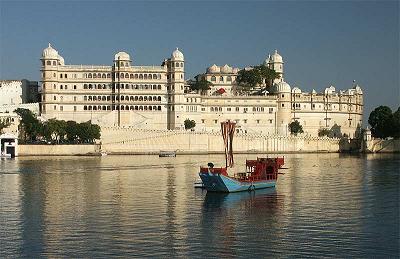 |
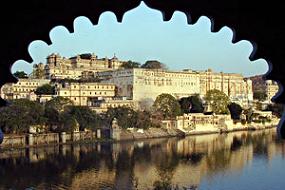 |
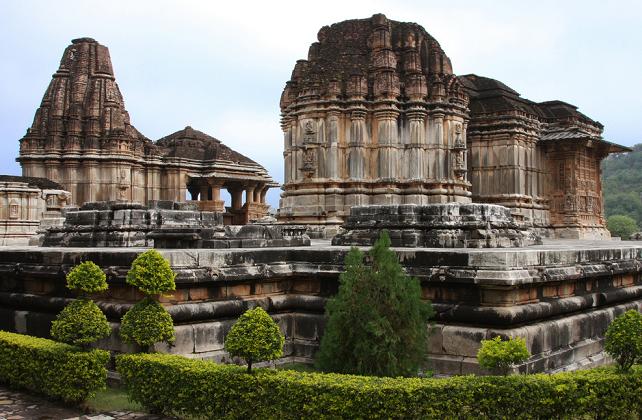 |
|
Udaipur City
Palace |
Udaipur |
Nagda |
|
|
Day 07. Deogarh - Jaipur, the Pink City (about 275 km / 6 hrs)
Early in the morning we drive to the Pink City,
Jaipur. This city owes
its name, foundations and careful planning to the great warrior and
astronomer, Maharaja Sawai Jai Singh II. Jaipur is the capital of
Rajasthan and famous for its handicrafts and precious and semiprecious
stones. Arrival in Jaipur. Rest of the time free for leisure at the
hotel.
Day 08. Jaipur
After breakfast we drive to the ancient capital of
Amber,
laying 11 km. away from Jaipur. Amber was the ancient capital of
Kachhawaha dynasty for 6 centuries before it was moved to newly
created Jaipur. We will ascend to the Palace Fortress on the back of
an Elephant. Enroute to Amber we will visit the
Hawa Mahal
(Palace of the Winds), built in 1799 AD, it contains 953 small
casements with each having its own balcony. The windows enabled cool
air to circulate and the ladies to watch processions below without
being seen. In the afternoon we visit the City Palace that is still
the formal residence of the royal family, built in a blend of the
Rajasthani and Mughal architecture. In the museum of the
City Palace
we visit the private collection of the Jaipur Maharajas. We continue
to Jantar
Mantar, a stone observatory, and the largest of Jai
Singh's five remarkable observatories. Its complex instruments reveal
us the secrets of medieval Indian astronomy. Later we have a walk
through the colourful Bazaar of Jaipur and visit a factory to see the
famous block printing work being done since centuries in Jaipur. In
the evening we drive through the new city of Jaipur and visit
"Laxmi Narayan Mandir",
a Hindu temple made out of white marble. We might have an opportunity
here to observe a prayer ceremony. Today we have dinner with a
presentation of Indian music and dance.
|
|
|
|
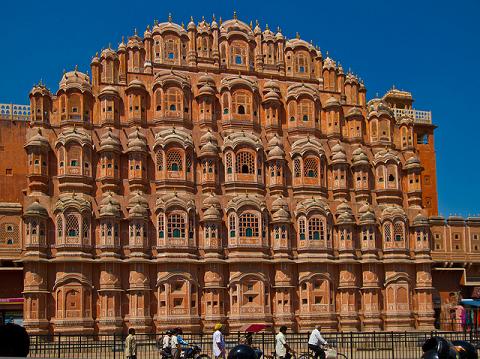 |
 |
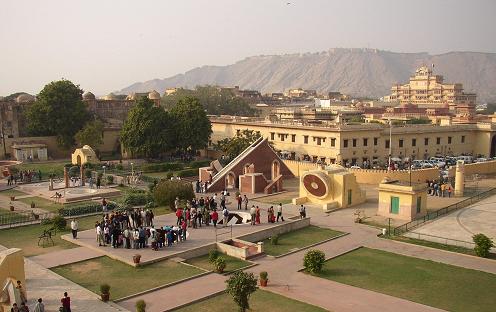 |
|
Hawamahal |
Citypalace
Jaipur |
Jantar Mantar
Jaipur |
|
|
Day 09. Jaipur - Fatehpur Sikri - Agra (about 260 km / 5-6 hrs)
Today we leave Rajasthan, the biggest state in India and drive through
a series of fields, small towns and villages to Agra. Enroute we make
a stop and visit Fatehpur Sikri,
which was once an imperial capital frozen in time, constructed by
Akbar the Great in the 16th century. This wonderful city constructed
by red sand stones was abandoned as abruptly as it had been built. It
has been generally stated that it was due to failing in the water
supply. Late evening arrival in Agra.
Rest of the day at leisure.
Day 10. Agra
Today very early in the morning after taking a cup of coffee in the
hotel, we left the hotel and proceed to Taj mahal. We have sunrise
visit of the most beautiful and famous building of India, the
Taj Mahal, an enduring monument of
love, with a continually fulfilling beauty. It was built by the Mughal
Emperor Shah Jahan between 1631-52, as a tomb and memorial to his
beloved wife Mumtaz Mahal (Jewel of the Palace), who died at the age
of 39 giving birth to her 14th child. We spend enough time at Taj
Mahal to take this impressive memory home. Then drive back to the
hotel and take breakfast. After a short break in the afternoon we
visit Agra Fort, built by
three of the greatest Mughal emperors. The construction of this
massive structure began in 1565 under Akbar's reign and continued till
the time of his grandson's reign, Shah Jahan who built the impressive
imperial quarters and mosque. Then we drive to Itmad-ud-Daulah which
was built by Nur Jahan for his father Ghias-ud-Din Beg.
Itmad-ud-Daulah was built between 1622 and 1628 A.D. on the banks of
Yamuna River. The tomb is not as big as Taj Mahal but the inlay
designs and carvings are not less than Taj Mahal. After this there is
the opportunity to look at the famous fine marble inlay work which is
still being done in Agra by the descendants of the families of
builders and artists of the Taj Mahal.
|
|
|
|
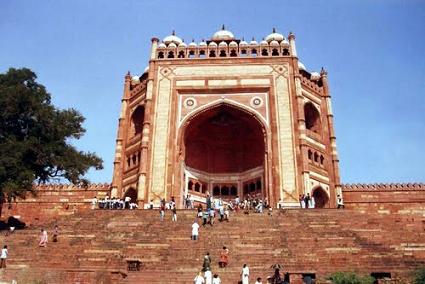 |
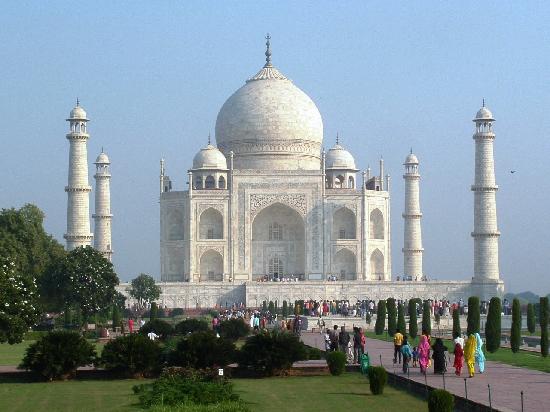 |
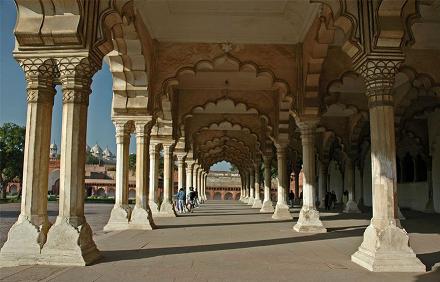 |
|
Buland Darwaza |
Agra Taj Mahal |
Agra Diwan I Am |
|
|
Day 11. Agra - Sikandra - Delhi (200 km / 03½ hrs)
Today after breakfast we drive to Delhi.
En route we visit Sikandra.
After sightseeing of sikandra we drive to Delhi. In the afternoon we
visit the National Museum of Delhi. This museum in the Janpath (south
of Raj Path) contains a good collection of Indian bronzes, Terracotta
and wooden sculptures from the Moorish period (2nd-3rd century BC.),
Pieces from the Vijayanagar period in South India, miniatures, murals
and garments of different strains. All these makes a visit to this
museum worthwhile.
Day 12. Delhi
In the morning we have sightseeing in Old Delhi. We take a Rickshaw
Ride parallel to the Red Fort
through the old city and famous Silk Road and Silver Bazaar.
Sightseeing of Old Delhi includes "Rajghat", the site where Mahatma Gandhi was cremated and
Jama Masjid, the
great mosque of old Delhi. Today we also visit the famous
"Humayun Tomb" which
is the first substantial example of Mughal
architecture
in India
and "Qutub Minar". "Qutub
Minar" is 71 meter high and consists of five stories. In 1199 work
began on this tower which was intended to be the most glorious tower
of victory in the world. This tower was damaged twice and repaired in
1326 and 1368. Before we proceed to the Hotel we drive through the
embassy area in New Delhi where we visit the
India Gate and see some
impressive Government Buildings.
|
|
|
|
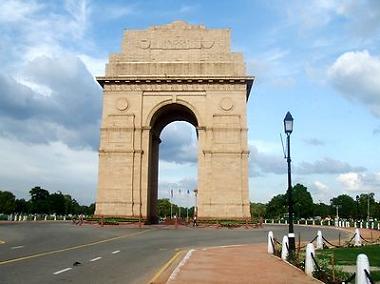 |
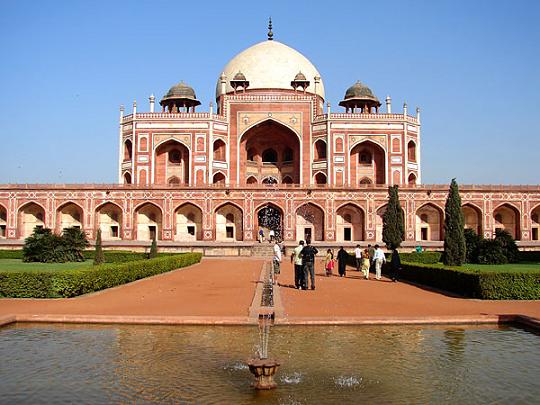 |
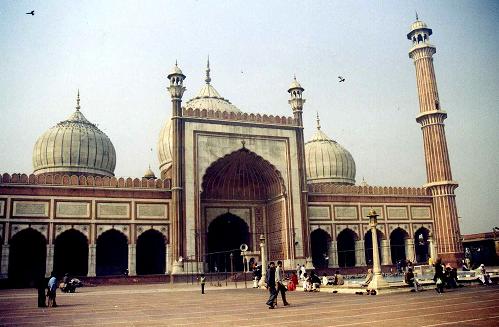 |
|
India Gate |
Humayun Tomb |
Jama Masjid
Delhi |
|
|
Day 13. Delhi
- Varanasi (by air): Sarnath
In the morning we have flight to
Varanasi. Varanasi is most sacred city of India and thus
visited by over one million people. Varanasi is also called the city
of light. Buddha visited this city in 500 BC.
Arrival in Varanasi and transfer to the hotel. After a short break a
drive can be organized to Sarnath (10 km).
Sarnath is the place where
Buddha delivered his first sermon at deer park. After visiting
Varanasi we drive back to the hotel.
Day 14. Varanasi
Varanasi is also known under the names of Kashi and Banaras. Its
present name means the city between two rivers; these are the Varuna
and Asi. For Hindus Varanasi has always been a very sacred place. The
city is not only a famous place of pilgrimage, but also a popular
place to die, because that will ensure immediate entry into heaven. In
the early morning we take a boat ride on the
Holy River Ganges and enjoy sunrise
on the boat. Ghats (flight of
steps) and the activities of pilgrims on that are the principal
attraction for visitors to Varanasi. Thousands of pilgrims and
devotees visit this city to make holy prayers, to meditate and to
purify themselves through taking a bath in the holy river Ganges. In
the noon we visit the city of Varanasi. In the afternoon we visit the
temple of "Bharat Mata". After that we an Evening Aarti on the ghats
of Varanasi.
|
|
|
|
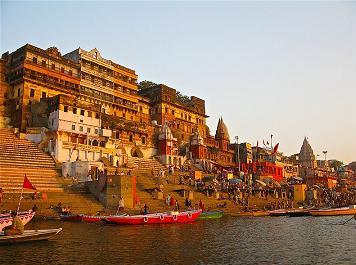 |
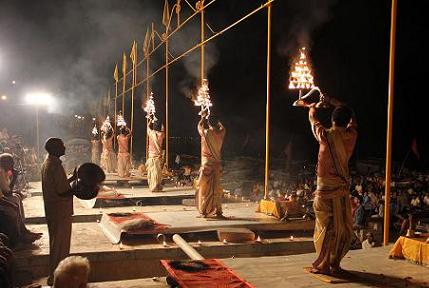 |
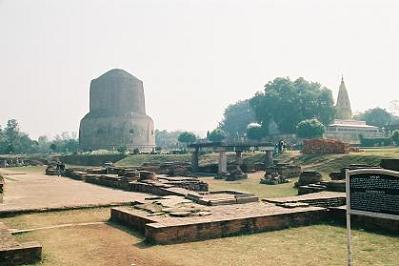 |
|
Gangaghat
Varanasi |
Ganga Aarti
Varanasi |
Sarnath
Varanasi |
|
|
Day 15. Varanasi - Kolkata (by flight or overnight train with an extended day)
In the morning we have flight to Kolkata (formerly. Calcutta).
Kolkata is Indias largest city and
one of the biggest city in south Asia. Historically, Kolkata was one
of the first English settlements in India, and the capital of the
British Crown Colony for a long time. Today we take a long walk
through the bazaars of Kolkata.
Day 16. Kolkatta
Today we explore this vibrant and lively city during the whole day
tour. We visit the Victoria Memorial and magnificent buildings in the
area of Chowringhee and Dalhousie Square. We also visit the Jain
Temple and the Fort Williams. In the area of Joransanko we have the
opportunity to visit the family house of the famous Indian writer
Rabindranath Tagore.
Day 17. Kolkatta - Hyderabad (by air)
Today morning we have flight to
Hyderabad. Arrival in Hyderebad and transfer to the hotel.
After a short break, we explore the markets and bazaars of Hyderabad.
The area around the Bazaar is beautiful and attractive. Here you can
see the shops of silver and Metalwork. Then we walk further to visit
the Kalibari temple of Hyderabad, kalibari temple is famous throughout
India for its excellent cuisine and there are many good restaurants
around. Our local guide will give you more tips on the spot.
Day 18.
Hyderabad - Golconda - Hyderabad
After having breakfast, we drive to visit the impressive fort at
Golconda. This fort is entered through gateways which have relief
ornamentation of birds and animals. The Fateh Darwaza or Victory Gate
is made of teak with an engraved Hindu deity studded with iron spikes.
Within the ramparts lie the mosques, temples, the 3 storeyed armoury,
the harem, the Hall of Public Audience and the Rani Mahal with the
royal baths. After visiting the Golconda fort we visit the Qutub Shahi
Tomb. Each tomb is made of black granite or green stone with fine
sculpture, inscriptions and remains of glazed decoration. Overnight in
Hyderabad. |
|
|
|
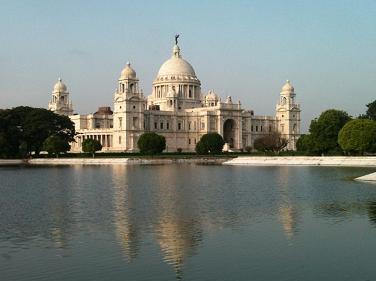 |
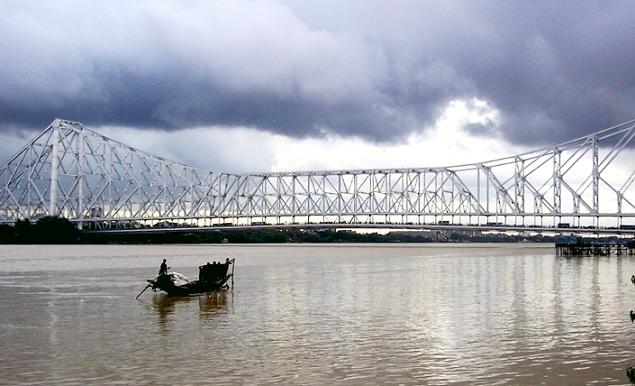 |
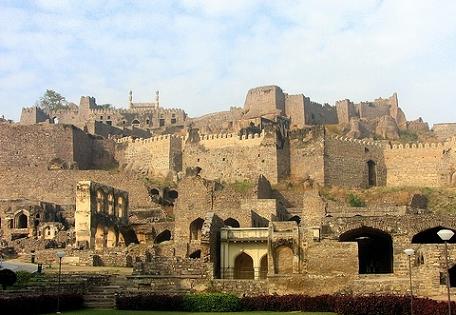 |
|
Calcutta
Victorial Memorial |
Howrah Bridge |
Golconda Fort
Hyderabad |
|
|
Day 19.
Hyderabad - Chennai (by air)
Today we have flight to Chennai. Chennai (formerly known as Madras) is
the largest cosmopolitan and capital city of
Tamil Nadu.
Chennai is located on the
Coromandel Coast of the Bay of Bengal. This city was developed after
1639 when the East India Company established a fort and trading post
at the small fishing village of Chennai.
Arrival in Chennai and transfer to the hotel. After a short break we
have sightseeing tour of Chennai.
We visit the Fort St. George near the harbour area of Chennai which
was built by the British in the 17th century and St. Mary's church
which was the first English church in India. We also visit "Government
Museum" of Chennai and Kapaleeswarar cave-temple chennai, a Shiva
shrine which dates back to 16th century. Overnight stay in Chennai.
Day 20. Chennai - Mahabalipuram (about 58 km / 1 hrs)
Today morning we drive to
Mahabalipuram. Mahabalipuram is a historical retreat set
amidst natural beauty, about 58 km south of Chennai. Mahabalipuram is
also known as Mamallapuram, the city of Bali. This ancient city is
located on the shores of the Bay of Bengal. This ancient place was the
major seaport of the Pallava dynasty and was the second capital of the
Pallava kings of Kanchipuram.
Mahabalipuram is globally known for the famous shore temples. In the
afternoon we have sightseeing of Mahabalipuram. We visit some of the
14 cave temples and 9 monolithic rathas (temple chariots). Pallavamala
was the ruler who made the famous port in the 7th century and was
largely responsible for building the temples. Overnight stay at the
Beach resort.
Day 21. Mahabalipuram - Pondicherry (about 132 km / 3 hrs)
After having breakfast we drive to
Pondicherry. Pondicherry was retained as French colony until
1954. Pondicherry has even today the French atmosphere amidst the
surrounding Tamil country. We visit the Sri Aurobindo Ashram, which is
a world famous Yoga and philosophy center. |
|
|
|
 |
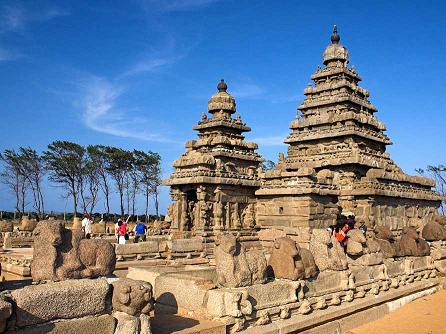 |
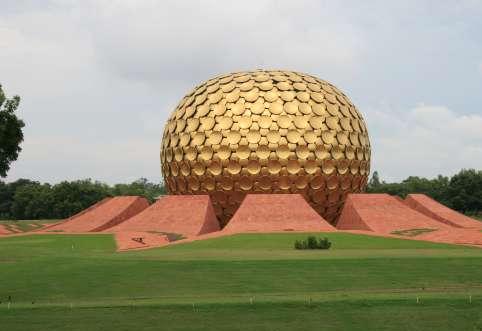 |
|
Chennai Church |
Mahabalipuram
Temple |
Pondicherry |
|
|
Day 22. Pondicherry - Chidambaram - Kumbakonam - Tanjore (about 190 km / 4
hrs)
We drive through the tropical mountains to
Chidambaram. Chidambaram lies
on the north edge of the coleroon river. In Chidambaram we visit the
Natraja Temple which is dedicated to the dancing
Lord Shiva, a famous
Hindu deity of the Chola Kings. On the way to
Tanjore we have a stop over in
Kumbakonam. Kumbakonam is famous
for its 18 temples in the town centre. After visiting Kumbakonam we
drive to Tanjore. The city Tanjore (Thanjavur) is our last destination
today. Tanjore was the capital of great chola empire who built more
than 70 temples between 10th and 14th century. We visit here one of
the world heritage monument, Brihasdisvara Temple (11th century),
which is also known as big temple.
Day 23. Tanjore - Trichy - Srirangam - Madurai (about 200 km / 5 hrs)
Today we drive to Trichy; the land near the delta is very fertile and
productive. This town Trichy is
so ancient that it was mentioned by Ptolemy in the 2nd century BC by
Alexandrian geographer. We climb stairs to the famous Rock Fort which
was built on 84 m high rock in the centre of town in about 1660. We
also visit a Shiva and Ganesha temple and enjoy a wonderful view of
the surroundings from the top. Then we drive to Srirangam and visit
the Ranganathasvami Temple which is one of the largest temples in
India dedicated to god Vishnu. After the visit of Srirangam we proceed
to Madurai. After the sightseeing of Srirangam we drive to Madurai.
Arrival in Madurai and transfer to the hotel.
Day 24. Madurai
Today we have sightseeing of Madurai.
Madurai is situated on the banks of river Vaigai and also
referred as the Athens of the East. Madurai has the most outstanding
examples of Vijayanagar temple architecture in the
Meenakshi temple, a standing
monument to the temple builders of the 16th and 17th century. Madurai
is also known as the "Pearl of South India". We visit the Thirumalai
Nayak Palace which dates back to 17th century. Then we visit the
Gandhi Museum which provides information on the life of
Mahatma Gandhi, on the colonial
history and the independence movement. In the evening we visit the
Meenakshi temple and afterwards have a walk through the bazaars of
this 2500 years old town. |
|
|
|
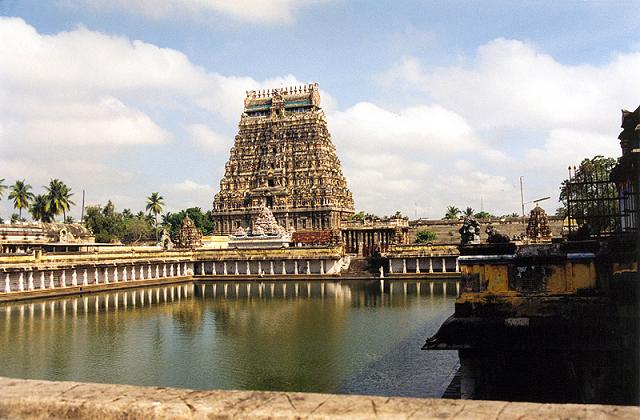 |
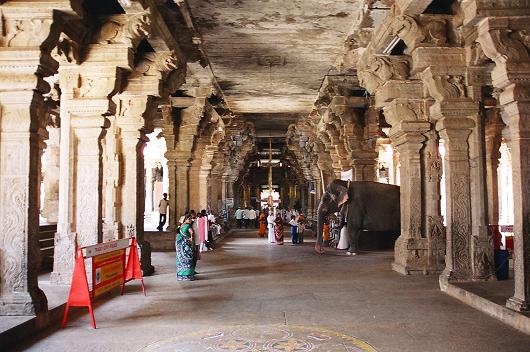 |
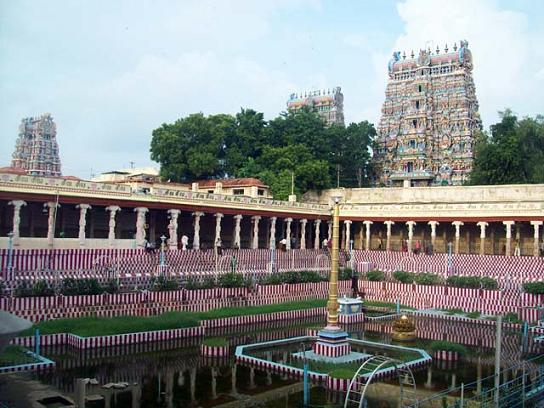 |
|
Chidambaram
Temple |
Srirangam
Temple Tiruchirapalli |
Meenakshi
Temple Madurai |
|
|
Day 25. Madurai - Thekkady (about 140 km / 3 hrs)
Today we drive to Thekkady.
Thekkady is one of the India's largest wildlife sanctuary. This
sanctuary has a large variety of flora and fauna and is the ultimate
place of many endangered species and a rich tribal culture. This
sanctuary is spread over an area of 780 square kms, surrounded by an
artificial lake over an area of 25 square kms. In 1978, Thekkady was
declared as Periyar Tiger
Reserve, under the Project Tiger Scheme. The rest of the day
is at leisure.
Day 26. Periyar - Alleppey (about 160 kms / 4 hrs)
In the early morning we take a boat ride on the famous Periyar lake
which is the central point of the national park and observe the
activites of various animals like Elephants, Bison, Wild oxen, Wild
boar and Spotted Deer. Afterwards we drive to
Alleppey and cruise through the
scenic back waters in and around Alleppey. Alleppey, the coastal town
on the Arabian Sea is known as the Venice of the East and famous for
the numerous backwater canals that meander through the town. This town
holds a thrilling event of snake boat race every year during August.
It is also known for its cashew nuts. Overnight stay at the houseboat.
We experience a magical tropical lagoon landscape on the boat trip
through the backwaters of Kerela.
Day 27. Alleppey - Cochin (55 kms / 1 ½ hrs)
In the morning we drive to Cochin. Cochin is the most interesting town in South India at Malabar
Coast and is also known as Venice of South. The town of Cochin is
divided in different parts namely, Fort Cochin, Willington Island,
Ernakulam, Bolghatty Island and Vypeen Island. Most of the historic
buildings are in Fort Cochin. We have whole day today at leisure so
that we can explore Cochin on our own. In Cochin we visit
St. Francis church, the oldest
European church in India in which the grave of famous sailor Vasco da
Gama can be visited. After the visit of St. Francis Church we have a
walk through the Jewish area of Mattancherry. In the late afternoon we
visit a Kathakali dance
school. Kathakali dances originate from Kerala and in its traditional
form relates stories from the Hindu
epics Ramayana and
Mahabharata. |
|
|
|
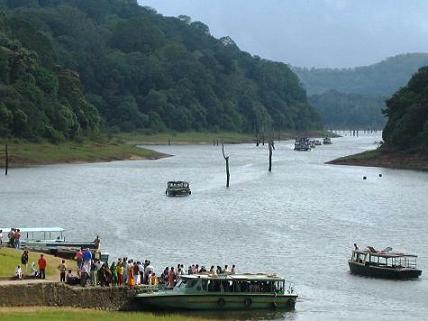 |
 |
 |
|
Periyar
Wildlife |
Alleppey Kerala |
Santa Cruz
Cochin |
|
Day 28.
Flight to Home Destination
Today, the day is today at leisure. You have to checkout from the
hotel upto 12.00 am. Depending on your departure time you will be
transferred to Airport / Railway station for onwards journey.
(End of
Tour) |
|
|
|
Tour
Reservation
To get more
information or to book this tour please submit the
Query Form
or send us an
E-Mail ! Your
booking will be activated only after we get a reconfirmation from
your side.
About Hotels:
We provide you the accommodation as per your budget mentioned above
in the table of hotels category for any of the booked tour. Hotels
provided by us are from budget to luxury class hotels. The criteria
for selecting hotels by us remains the best value of your money. We
also provide you wherever possible accommodation in heritage hotels.
Heritage Hotels are old Palaces, Forts and Grand mansions of
Maharajas which have been later renovated and converted into Hotels.
Rooms are decorated all individually. Rooms are comfortable,
romantic and present the flair of olden Maharaja days.
|
|

